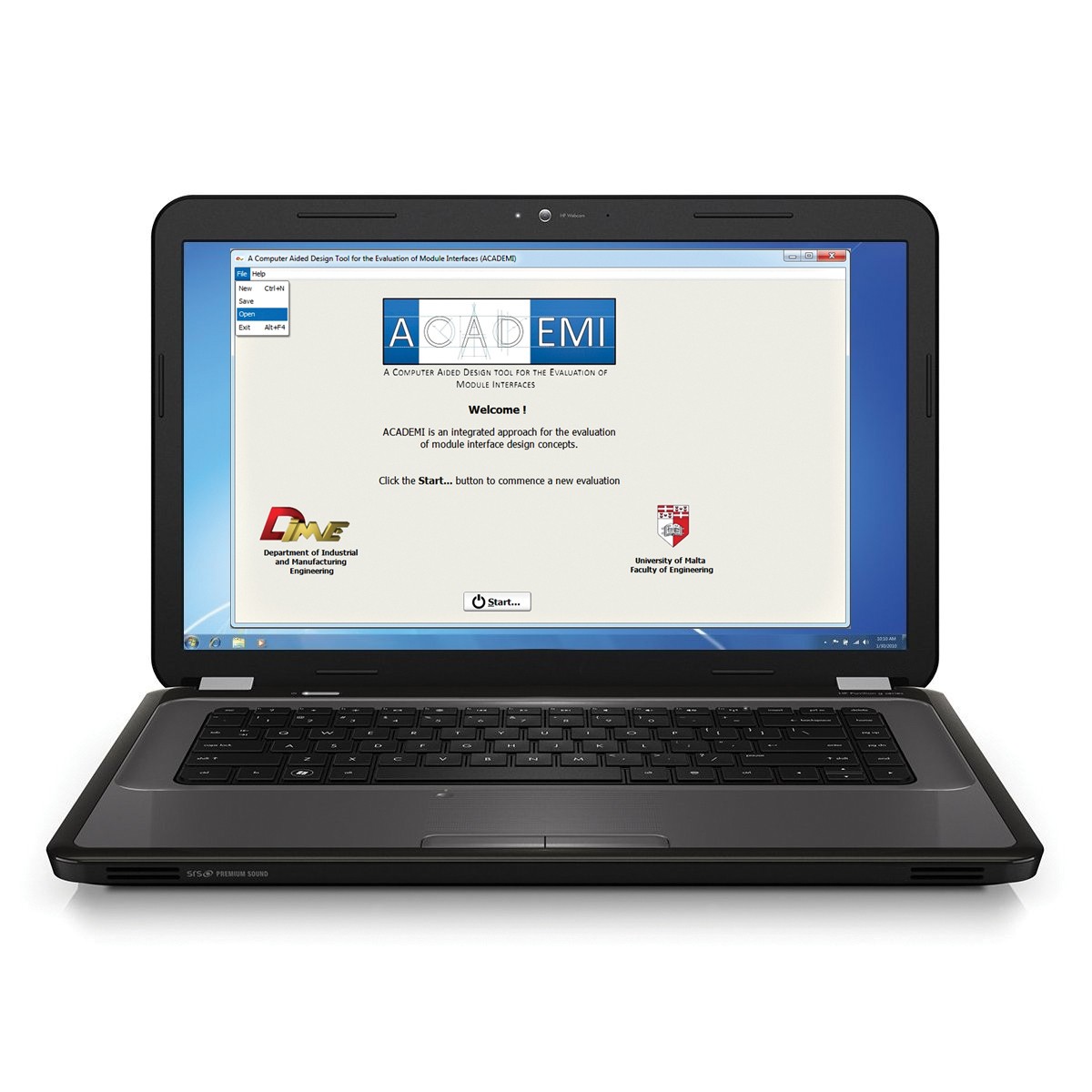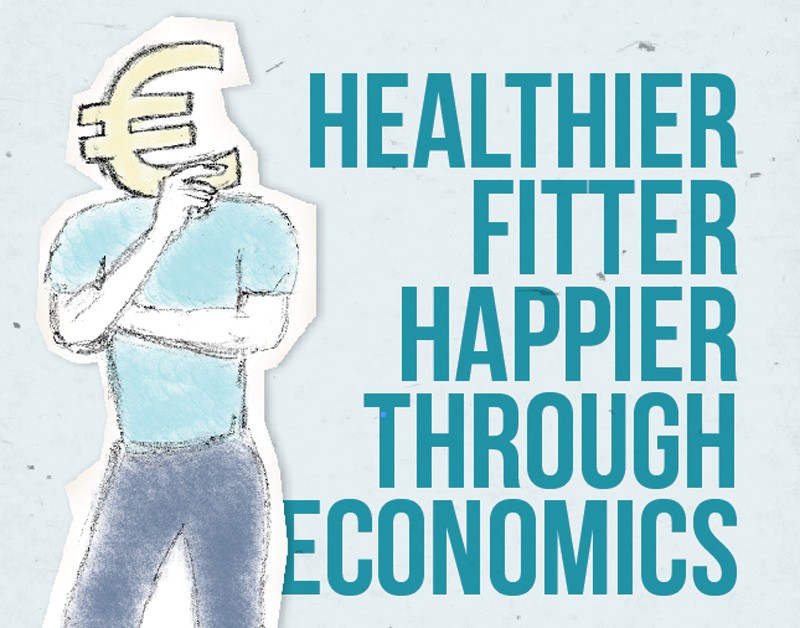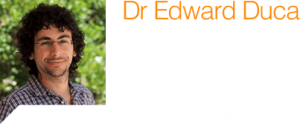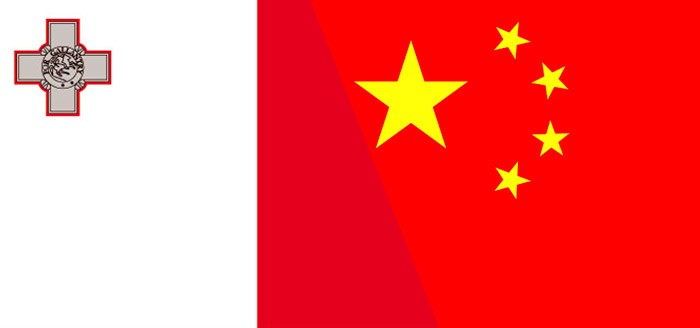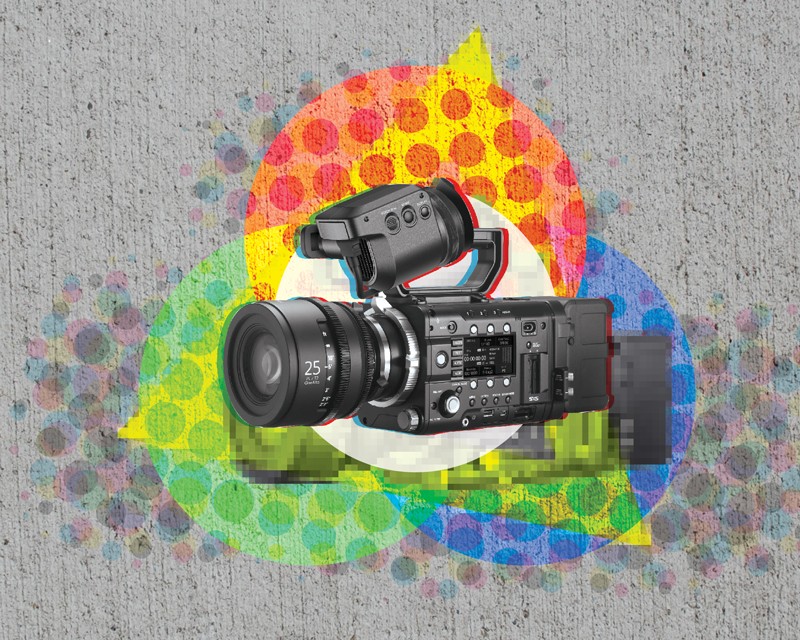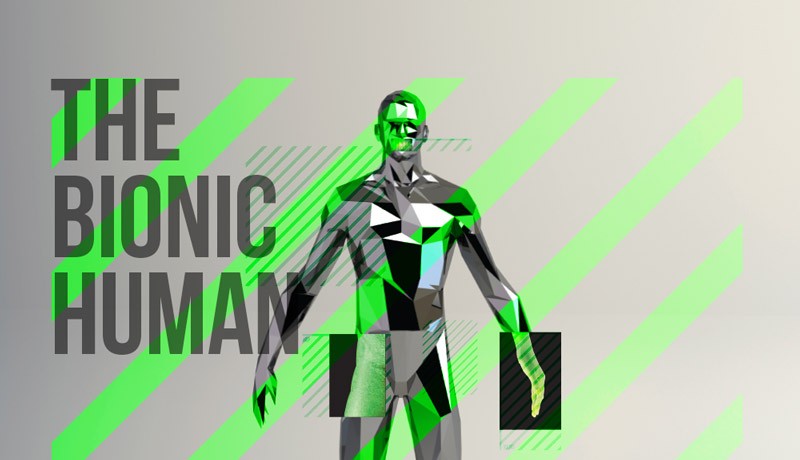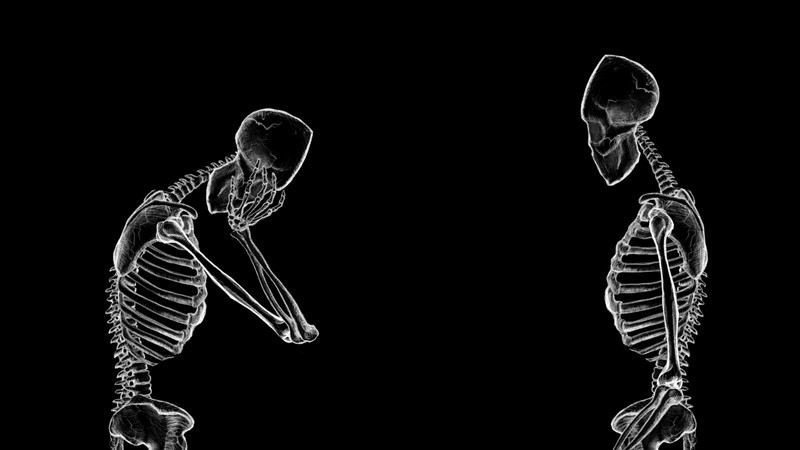Future-Safe Malta
Words by Prof. Saviour Formosa
“Extreme weather leaves Mediterranean countries picking up the pieces. Egypt and Lebanon were the hardest hit with over 1.2 million people displaced overnight. Malta didn’t fare much better. The authorities have reported over 2,300 dead or missing, thousand injured and 74,000 persons displaced. Power cuts have been reported all over the island after Turbine Two tripped at the Delimara Power Station. Enemalta have not replied. The islands have taken a major blow to their infrastructure. Debris has been reported 1 km away from the coasts. The AFM and emergency responses were immediately dispatched and are starting to clear arterial roads. Insurance companies are still counting the costs. Valletta, Floriana and parts of Isla were protected from the storm surge by centuries-old Knight’s fortifications. The following localities have been affected: Birgu, Bormia, Kalkara, Marsa, Gzira, Msida, Pietà, San Giljan, Sliema, Ta’Xbiex, Xghajra, Birzebbuga, Marsascala, Marsaxlokk, Xlendi and Marsalforn. “
The above cutout could become reality if a Category 3 storm lashes Malta with 178 to 208 km per hour winds. The chances are minimal but too probable to ignore, since in 1995 a similar storm formed close to the Maltese Islands followed by others in 1996, 2006, and 2011. Below are two scenarios that compare Malta as it currently stands against an island with a solid disaster management plan.
[ SCENARIO 1 – AN UNPREPARED ISLAND]
The emergency forces have been inundated with calls for help and have few plans to operate a workable rescue effort. Key personnel were lost at home or while rushing to the scene, since the infrastructure has been knocked out, paralysing the island. Power surges or power cuts have caused fires all over the Islands creating an apocalyptic scenario. With the storm still raging, the lack of a back-end ICT network has rendered communication near impossible.
[ SCENARIO 2 – THE IDEAL SCENARIO]
A fleet of small aerial drones is monitoring the disaster. The authorities are using them to identify the hardest hit areas and map out corridors that allow access on the ground. Emergency vehicles are being deployed safely. Services will be redeployed after safety assessments and clearing of the main infrastructure. Paramedics, NGO rescue teams, and armed forces help move people to safer grounds and carry out rescue operations. Community buildings on higher ground are converted into temporary shelters. In turn, decision-makers are kept informed using an Emergency Room for effective relief.Continue reading
Choices, Choices, Choices…
Taking the right decision can be a very challenging and daunting process. Designing a mobile phone, a makeup case, or even a pipe needs engineering teams to continuously make important choices quickly. Lawrence Farrugia (supervised by Prof. Jonathan C. Borg) developed a framework that helps engineers evaluate concepts and take these decisions practically. In a typical design process, the design team generates a number of different concepts that fulfil what is needed from the product. These design concepts are then evaluated against conflicting evaluation criteria. Criteria are chosen from the life cycle of the product and can include cost, quality, ease of use, and recyclability (pictured). Evaluation determines the concept chosen for further development.

Although there are design tools that are intended to support engineering design teams in decision making, the reality check is that these tools are rarely used. Such tools are typically too impractical to employ in the real world. Due to the ever increasing complexity of products and the importance of early decision making, this research recognised the need to provide engineering design teams with a practical yet reliable support system.
Farrugia’s research was carried out at the Concurrent Engineering Research Unit (CERU) within the Faculty of Engineering. The framework he developed aids design teams to analyse and rank multiple design concepts against several conflicting evaluation criteria. The proposed framework was then implemented into a prototype computer aided design (CAD) tool named ACADEMI (pictured).
The tool developed by Farrugia allows for design concepts to be mathematically appraised and ranked automatically. The user inputs the various evaluation criteria and the best design is shown in a very short time. This ranking helps the design team rapidly figure out which design concepts should be developed. After the framework and tool were developed the research work was evaluated in the field by engineers from industry and academia. Most industry personnel said that they would be willing to adopt the computer tool in their daily professional work. ï
More information about the research work may be accessed through: www.academi.co.nr
This research was performed as part of an M.Sc. (Research) in Mechanical Engineering at the Faculty of Engineering. This research was partially funded by the Strategic Educational Pathways Scholarship (Malta). This Scholarship is part-financed by the European Union — European Social Fund (ESF) under Operational Programme II — Cohesion Policy 2007–2013, ‘Empowering People for More Jobs and a Better Quality Of Life’.
Healthier Fitter Happier through Economics
People do not always act rationally. They overeat, overspend, and find it difficult to plan for the future. THINK met Prof. Liam Delaney to talk about how a new branch of economics might solve the pension crises, the obesity epidemic, the financial situation, help science, and make us feel better. Words by Edward Duca
Should Malta Be The Next China?
 After repeatedly visiting Asia, I totally disagree with comments occasionally made that China’s industrial success is wholly attributed to its ability to replicate low quality versions of branded products at rock-bottom prices. In China there are many good examples of good quality products and brands being produced such as Audi, Airbus, and Armani. Based on these facts, what Maltese industry and policy makers should focus on is making our industry more competitive by improving the current situation and analyzing products being developed elsewhere.
After repeatedly visiting Asia, I totally disagree with comments occasionally made that China’s industrial success is wholly attributed to its ability to replicate low quality versions of branded products at rock-bottom prices. In China there are many good examples of good quality products and brands being produced such as Audi, Airbus, and Armani. Based on these facts, what Maltese industry and policy makers should focus on is making our industry more competitive by improving the current situation and analyzing products being developed elsewhere.
The Maltese industry is not really dying. Our industry has indeed changed, for example from textiles to pharmaceuticals. Overall, the number of employees has declined. However, this is either due to industry becoming more efficient hence able to produce more with less, or due to the way statistical data is being collected.
Malta’s industrial sector can become more competitive. However, what does it mean to ‘be competitive’? Goods should be produced with shorter delivery periods, better costs and quality compared to competitors. Since we lack raw materials cost is very challenging to compete on. On the other hand, improving quality provides much more opportunity. Quality can be improved by increasing the external quality of the products manufactured, the product’s functionality, the interactions that take place with clients during product development, the quality of support and after sales services, management of operations, and how operators work. Core to adopting this quality-based approach is the need to focus on shifting from just manufacturing products to designing and manufacturing products in Malta.
“Goods should be produced with shorter delivery periods, better costs, and quality compared to competitors”
To design their own products, Maltese manufacturing firms need to set up an internal Research & Development unit. At the same time, industry needs support through government policies and incentives. In their publication ‘Vision 2015’ American consultants clearly specify product design as an enabler to higher value added manufacturing. The Malta Chamber of Commerce, Enterprise & Industry has also recommended starting a Malta Business Research & Innovation Body. These recommendations need urgent implementation to shift Malta’s manufacturing industry towards becoming ‘design driven’.
The UoM’s Faculty of Engineering has been actively contributing towards a design driven approach. Our undergraduate engineers are purposely trained in this design-centric approach. Additionally, some final year student projects focusing on design are sponsored by industry: an excellent win-win mechanism. A number of both mechanical and electrical engineers have also benefited through an evening M.Sc. in Integrated Product Development. The Faculty also collaborates with industry through MCST funded Research & Innovation projects. More financial support to University would help every academic active in research to regularly receive decent research funds.
Considering the above, Malta does not and should not aim to be the next China. On the other hand, Malta should nurture its unique strengths such as a highly educated, flexible English-speaking workforce. We should aim to address weaknesses related to Malta’s manufacturing sector. This requires short-term and long-term commitments from our policy makers. Business leaders can also proactively embrace change by aiming to offer quality and innovative solutions, rather than aiming for higher production rates of existing products. The Maltese industry should support continuous training and collaborate on research activities with University. The UoM can help them become more innovative. Like Airbus, Armani, and Audi, Maltese business leaders should exploit, rather than fear, Asian industry. Some Malta based entities, such as Toly Products Ltd, are already going down these routes and are reaping the rewards of growth during a recession. Clearly others should aim to do the same to keep Malta competitive.
Incubator Helps Start-ups take off

The old saying goes: it takes a village to raise a child. In other words, to get it right a community effort is needed, shared by family and friends who pass on their experience and knowledge to the youngster.
The same saying applies to building technology companies. Budding technology entrepreneurs in Malta need plenty of nurturing and guidance to get their innovations off the ground and into the marketplace. A supportive and well-connected entrepreneurial community is what is needed to transform Malta’s innovations into start-up ventures that will expand the economy.
The good news for Malta is that the basic components of a technology start-up community already exist. The University of Malta is a hothouse of world-class scientific, engineering, and creative research that holds the potential to spin out exciting commercial ventures. A new generation of bright, technically-skilled graduates is starting to pursue entrepreneurship as a career path. Malta lacks a professional venture capital investment industry, but does have high net worth entrepreneurs and private ‘angel’ investors. Many of these have valuable experience gained abroad and are hungry to find and fund high-potential technology companies. The government is exploring ways of encouraging early-stage investment by way of tax incentives and seed fund development. Ideas, entrepreneurial energy, and money — the key ingredients for raising technology start-ups — are all here on the island.
“Tucked away in their laboratories, garages, and workshops, Malta’s innovators are not networking”
So, what is holding us back? I recently spoke to Steve Blank, a highly successful Silicon Valley entrepreneur and investor. I asked him what he thought was missing. His reply: ‘much of the Valley’s alchemy lies in connectivity’.
Innovators, entrepreneurs, investors – Malta has got them all. Unfortunately, they are not finding each other. Tucked away in their laboratories, garages, and workshops, Malta’s innovators are not networking. They need skilled and experienced business people to push their technologies past the idea stage. Wealthy angel investors are here in Malta, but they frequently operate ‘under the radar’ and can be hard to access. In the absence of connections, both investors and innovators miss out on potentially rewarding opportunities. Promising young ventures, which might takeoff with a little support and funding, consequently get left to struggle on their own.
The University of Malta Business Incubator will start operations this year and create a platform for new start-ups. Opening its doors to researchers, students, and aspiring technology entrepreneurs, the incubator will provide them with space to plan, launch, and grow businesses. There, a network of seasoned entrepreneurs, business mentors, and angel investors will join them. These ‘parents and village elders’ will be mobilised to concentrate efforts to guide start-ups to create a company, raise capital, and reach the marketplace. We aim to make the incubator a lively hub to create businesses.
Building a company, like raising a child, is a lot of hard work. Bringing the community together under one roof, where it can do the job right, will ease the labour of start-up development, and improve the odds of scoring triumphs.
Ben McClure is Manager at the University of Malta Business Incubator
Immersive 3D Experience

Comfortably sitting in seat 3F, John is watching one of his favourite operas. This close he can see all the details of the set, costumes, and the movements of the music director as he skilfully conducts the orchestra by careful gestures of his baton. He is immersed in the scene, capturing all the details. Then all of a sudden, the doorbell rings. Annoyed, John has to stop the video to see who it is. This could be the mainstream TV experience of the future.
This scene is called free-viewpoint technology that is part of my research at the University of Malta (UoM). Free-viewpoint television allows the user to select a view from which to watch the scene projected on a 3D television. The technology will allow the audience to change their viewpoint when they want, to where they want to be. By moving a slider or by a hand gesture, the user can change perspective, which is an experience currently used in games with their synthetically generated content — synthetically generated by a computer game’s graphics engine.
“For free-viewpoint to work, a scene needs to be captured using many cameras”
Today we are used to seeing a single viewpoint. If there are multiple perspectives we usually don’t have any control over them. Free-viewpoint technology will turn this idea on top of its head. The technology is expected to hit the market in the near future, with some companies and universities already experimenting with content and displays. New auto-stereoscopic displays do not need glasses (pictured next page), these displays ‘automatically’ generate a 3D image depending on which angle you view them. A clear example was the promise made by Japan to deliver 3D free-viewpoint coverage of all football games as part of their bid to host the FIFA World Cup in 2022. The bid was unsuccessful, which might delay the technology by a few years.
Locally, my research (and that of my team) deals with the transmission side of the story (pictured). For free-viewpoint to work, a scene needs to be captured using many cameras. The more cameras there are, the more freedom the user has to select the desired view. So many cameras create a lot of data. All the data captured by the cameras has to be transmitted to a 3D device into people’s homes, smartphones, laptops and so on. This transmission needs to pass over a channel, and whether it is fibre cable or wireless, it will always have a limited capacity. Data transmission also costs money. High costs would keep the technology out of our devices for decades.
My job is to make a large amount of data fit in smaller packages. To fit video in a channel we need to compress it. Current transmission of single view video also uses compression to save space on the channel so that more data can be transmitted and save on price. Note that, for example for high definition we have 24 bits per pixel and an image contains 1280 by 720 pixels (720p HD standard), that’s nearly 100,000 pixels for every frame. Since video is around 24-30 frames per second the amount of data being transmitted every minute starts escalating to unfeasible amounts.
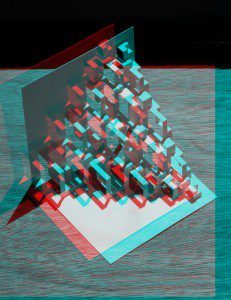
double 3d / 3d squared
my first attempt at an anaglyph photo of a paper structure. you will need those red/blue glasses to view it properly.
Free-viewpoint technology would be another big leap in size. Each camera would be sending their own video, which is the same amount of data as we are now getting. If there are ten cameras, you would need to increase channel size by a factor of ten. This makes it highly expensive and unfeasible. For the example above, the network operator needs ten times more space on the network to get the service to your house, making it ten times more expensive than single view. Therefore, research is needed to drastically reduce the amount of data that needs to be transmitted while still keeping high quality images. These advances will make the technology feasible, cheaper, and available for all.
So the golden question is, how are we going to do that? Research, research, and more research. The first attempts by the video research community to solve this problem were to use its vast knowledge of single view transmission and extend it to the new paradigm. Basic single view algorithms (an algorithm is computer code that can perform a specific function, like Google’s search engine) compress video by searching through the picture and finding similarities in space and in time. Then the algorithms send the change, or the error vector, instead of the actual data. The error vector is a measure of imperfections and how it is used by computer scientists to compress data is explained below.
First let us look at the space component. When looking at a picture, it is quite clear that some areas are very similar. The similar areas can be linked and the data grouped together into one reference point. The reference point has to be transmitted with a mathematical representation (vector) that explains to the computer which areas are similar to each other. This reduces the amount of data that needs to be sent.
Secondly, let us analyse the time aspect. Video is a set of images placed one after another and run at 25 or 30 frames per second that gives the illusion of movement and action. To make a video flow seamlessly images that are right after each other are very similar. If we have two images the second one will be very similar to the first, with only a small movement of some parts of the image. Like we do for space, a mathematical relationship can be calculated for the similar areas from one image to the next. The first image can be used as a reference point and for the second we transmit only the vector that explains which pixels have moved and by how much. This greatly reduces the data that needs to be transmitted.
The above techniques are used in single view transmission, with free-viewpoint technology we have a new dimension. We also need to include the space between cameras shooting the same scene. Since the scene is the same there is a lot of similarity between the videos of each camera. The main difference is that of angle and the problem that some objects might be visible from one camera and not from another. Keeping this in mind, a mathematical equation can be constructed that explains which parts of the scene are the same and which are new. A single camera’s video is used as a reference point while its neighbouring cameras only transmit the ‘extra’ information. The other camera can compress their content drastically. In this way the current standard can be extended to free-viewpoint TV.
Compressing free-viewpoint transmissions is complex work. Its complexity is a drawback, mobile devices simply aren’t fast enough to run computer power intensive algorithms. Our research focuses on reducing the complexity of the algorithms. We modify them so that they are faster to run, need less computing power, and still keep the same quality of video, or with minimal losses.
“The road ahead is steep and a lot of work is needed to bring this technology to homes”
We have also explored new ways of reconstructing high quality 3D views in minimum time, using graphical processing units (GPUs). GPUs are commonly used by high-end video games. Video must be reconstructed with a speed of at least 25 pictures per second. This speed must be maintained if we want to build a smooth continuous video in between two real camera positions (picture). A single computer process cannot handle algrothims that can achieve this feat; instead parallel processing (multiple simultaneous computations) is essential. To remove the strain off a main processing unit in a computer processing can be offloaded to a GPU. Algorithms need to be built that use these alternative processing powers. Ours show that we can obtain the necessary speeds to process free-viewpoint 3D video even on mobile devices.
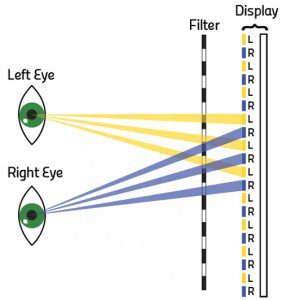
Since free-viewpoint takes up a large bandwidth on networks, we researched whether these systems can feasibly handle so much data. We considered the use of next generation mobile telephony networks (4G). Naturally they offer more channel space, we wanted to see how many users they can handle at different screen resolutions. We showed that the technology can be used only using a limited number of cameras. The number of users is directly related to the resolution used, with a lower resolution needing less data and allowing more views or users. This research came up with design solutions for the network’s architecture and broadcasting techniques needed to minimise delays.
The road ahead is steep and a lot of work is needed to bring this technology to homes. My vision is that in the near future we will be consuming 3D content and free-viewpoint technology in a seamless and immersive way in our homes and mobile devices. So for now sit back and imagine what watching an opera or football match on TV would look like in a few years’ time.
The Bionic Human
Faster, fitter, and flawless? What would it take to build a Bionic Human? Ing. Emmanuel Francalanza delved into research at the Faculty of Engineering to see how Malta could contribute. 3D Art by Jean Claude Vancell
Through the Looking Glass
What’s your favourite game? Pacman? Doom? World of Warcraft? Most of us have spent hours immersed in video games, many still do. Prof. Gordon Calleja studies why and how we get so involved in games. Science writer Dr Sedeer El-Showk found out about Calleja’s latest book and game that are gaining worldwide fame.
The key to networking
I first heard about COST (European Cooperation in Science and Technology, a networking platform for scientists www.cost.eu) way back in 1996 during a pharmacokinetics meeting in Athens. Some participants mentioned that their attendance had been funded by COST. So on my return I contacted the Malta Council of Science and Technology to try and obtain more information. When I learnt that COST funds EU networking I quickly applied to become a member of a COST action (this is what COST calls a network). After bureaucratic leaps and bounds I become Malta’s representative on a COST action. It certainly opened new horizons to me and the networks I formed with top researchers in Europe were unique.
By 2010 my enthusiasm resulted in MCST nominating me as Malta national contact point for COST. It has been of huge satisfaction that in these three brief years Malta’s participation has risen from 6 actions to over 100. Over 150 Maltese researchers take part in COST.
Why is COST so important for Malta?
The complaint I hear most often in Malta, not only in academic circles but also among SMEs (small to medium enterprises), is that research in science is only for the elite, that it is too high brow and that it is not relevant to Malta. COST proves otherwise. What else could link disaster bioethics, to colour and space in cultural heritage to the comparison of European prostitution policies, with submerged prehistoric archaeology? Other links include the quality of suburban building stocks, integrated fire engineering and response, and language impairment in a multilingual society. COST also funds networks across a whole spectrum of research from the humanities to the fundamental sciences including string theory to childbirth in various cultures.
Participating in a COST action involves very simple administrative and funding procedures. For once, our small size is an added advantage since every COST country is allowed to nominate two members to participate in each action, putting Malta COST researchers at par with researchers from much larger countries. Achieving these results has not been easy, since many researchers hesitate and require persistent prodding. There are frequent reminders and one to one meetings to persuade them to participate. It has been a real eye-opener meeting researchers in Malta from different disciplines and learning about their research.
Deciding to participate in COST may seem a small step to some, an added administrative burden to others, while some see it as another travel commitment. COST offers the response to the conundrum of how to overcome our physical (and perhaps in some instances also mental) insularity. You should not let this opportunity pass…
COST in Malta is managed by the Malta Council for Science and Technology. For more information see www.mcst.gov.mt/networking/cost or contact Dr Janet Mifsud, COST CNC, (+356 23402582/2845, janet.mifsud@um.edu.mt) or cost.mcst@gov.mt




